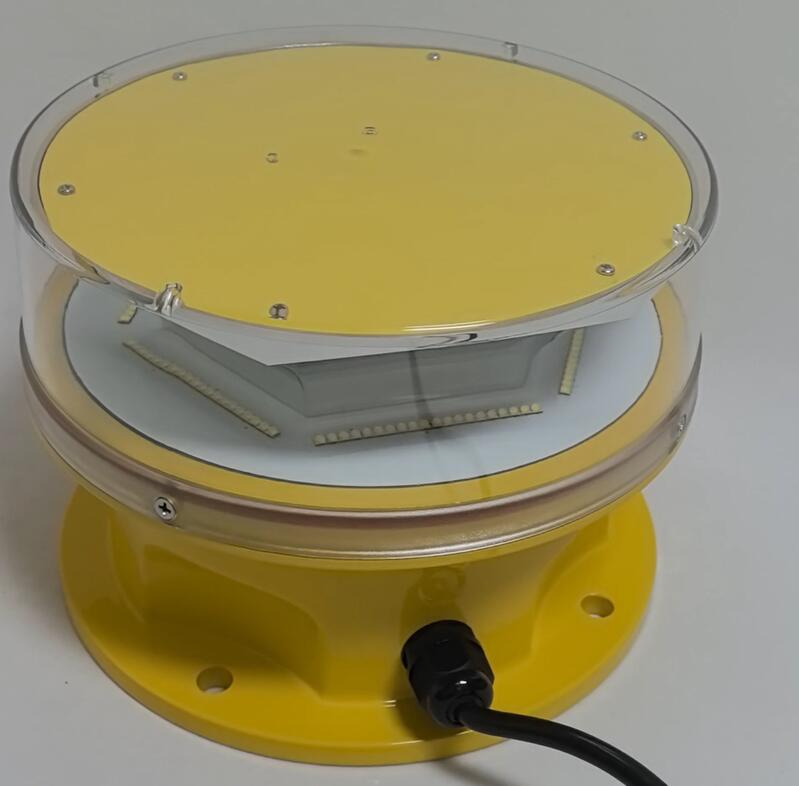In the world of aviation, visibility and hazard awareness are essential. Among the numerous safety measures in place, FAA warning lights stand out as one of the most effective tools to prevent collisions between aircraft and tall structures. Whether it's a communication tower, high-rise building, wind turbine, or industrial chimney, FAA warning lights ensure that these obstacles are clearly marked and visible to pilots under all conditions.
What Are FAA Warning Lights?
FAA warning lights are specialized lighting systems installed on tall structures to alert pilots of their presence. Mandated by the Federal Aviation Administration (FAA), these lights play a crucial role in maintaining safe airspace, especially during low-visibility conditions such as nighttime, fog, or storms.
The FAA categorizes these lights based on intensity and color, with each type serving a specific function depending on the height and location of the structure. Red lights are typically used at night, while white strobe lights are employed during the day or in areas without significant residential presence to reduce light pollution.

Where FAA Warning Lights Are Used
These systems are commonly found on:
Telecommunication towers
Wind turbines
Skyscrapers
Flare stacks
Cooling towers
Cranes
Bridges
Their widespread application highlights their importance not just in aviation but across many sectors where tall infrastructure intersects with flight paths.
| faa warning lights |
Types of FAA Warning Lights
The FAA divides warning lights into three main categories:
Low-Intensity Lights
Used for structures under 150 feet, typically red and activated at night.
Medium-Intensity Lights
White or red, these are used for structures ranging from 150 to 500 feet. Depending on the environment, they can be operated in dual modes (white for day, red for night).
High-Intensity Lights
White strobe lights designed for structures taller than 500 feet. These provide visibility during both day and night without the need for red lights.
Each type must meet specific technical and photometric standards outlined in the FAA's Advisory Circulars, such as AC 70/7460-1.
Why FAA Warning Lights Matter
Collisions between aircraft and unmarked or poorly marked obstacles can be catastrophic. With increasing air traffic and growing urban infrastructure, the risk of such incidents has only grown. FAA warning lights are thus not merely optional—they are vital for:
Preventing mid-air accidents
Ensuring regulatory compliance
Maintaining the integrity of controlled airspace
Enabling safe navigation for both manned and unmanned aircraft
Moreover, with the rise of drone usage and urban air mobility, the importance of clearly marking obstacles has expanded beyond traditional aviation.
Technological Advancements
Modern FAA warning lights have evolved from basic incandescent bulbs to advanced LED systems. LEDs offer several benefits:
Longer operational life
Lower power consumption
Better reliability in extreme weather
Reduced maintenance frequency
Another innovation is the integration of remote monitoring. Smart lighting systems now come equipped with sensors and communication modules that report failures or power issues in real time. This ensures immediate maintenance response and minimizes safety risks.
Some systems are also equipped with aircraft detection lighting systems (ADLS), which activate the warning lights only when aircraft are nearby. This helps reduce light pollution without compromising safety.
Installation and Design Considerations
Installing FAA warning lights involves more than just mounting lights. Engineers must account for:
Structural integrity
Heat and weather resistance
Lightning protection
Solar and backup power options for remote sites
Proper alignment and beam coverage
Lighting must be placed at specific intervals along the structure’s height, with the topmost level being most critical. For structures with complex geometry, such as bridges or cranes, customized light arrangements are often necessary.
Regulatory Framework
The FAA sets clear guidelines for the use and maintenance of obstruction lighting. Compliance with FAA Advisory Circulars is mandatory for any structure that may interfere with navigable airspace. Failure to install proper FAA warning lights can lead to enforcement actions and increased liability in the event of an incident.
These rules apply across the United States and are often mirrored by international aviation authorities, such as ICAO, with minor regional variations.
Environmental and Community Impact
While safety is the priority, community impact is also considered. In residential areas, flashing white lights at night can cause disturbances. In such cases, red lights are preferred for nighttime operation. The use of ADLS technology further helps minimize unnecessary lighting, preserving dark skies and reducing light-related stress for local wildlife.
Maintenance and Monitoring
Like any safety-critical system, FAA warning lights require regular maintenance. This includes visual inspections, cleaning, and functional testing. Remote monitoring systems make this process more efficient by alerting operators to outages, voltage drops, or sensor errors automatically.
Having a robust maintenance program not only extends system life but also ensures uninterrupted compliance and reduces the risk of costly failures.
Looking Ahead
As urban landscapes grow taller and airspace usage diversifies with drones and air taxis, the relevance of FAA warning lights will continue to expand. Future developments may include integration with digital airspace mapping tools and AI-based monitoring for predictive maintenance.
FAA warning lights are a critical intersection of technology, regulation, and safety. They quietly perform a life-saving role, allowing modern infrastructure to coexist with safe aviation. As industries innovate and cities reach for the sky, these beacons remain steadfast, guiding pilots and safeguarding lives from above.